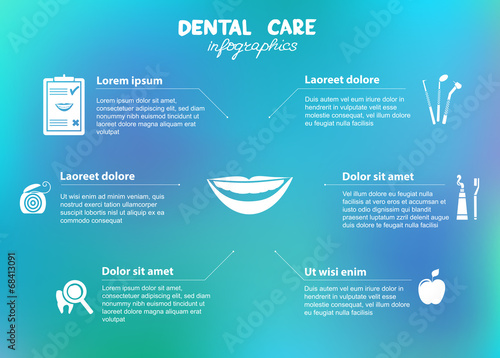The Development Of Oral Surgery: Arising Technologies And Developments Transforming The Self-Control
The Development Of Oral Surgery: Arising Technologies And Developments Transforming The Self-Control
Blog Article
Published By- https://www.digitaljournal.com/pr/news/getnews/primal-life-organics-launches-v4-real-white-teeth-whitening-system
Invite to the world of dental surgery, where innovations and developments are forming the future of the area! In this interesting realm, you'll witness the transformative power of robotics, the sophisticated marvel of 3D printing, and the game-changing impact of minimally invasive strategies.
The future of dental surgery holds a pledge of accuracy, efficiency, and improved individual outcomes. With the help of advanced robotics, doctors have the ability to execute complex procedures with greater precision and control.
3D printing innovation is changing the production of oral implants and prosthetics, using customized services that fit perfectly right into each individual's unique anatomy.
Furthermore, minimally intrusive methods are lowering post-operative pain and recuperation time, enabling patients to go back to their daily lives quicker.
Prepare to discover the amazing developments and advances that are reshaping the landscape of oral surgery!
Developments in Robotics
One major development in dental surgery is making use of robot technology, which permits precise and reliable surgeries. With the help of robot systems, oral surgeons have the capability to do complicated surgical treatments with improved precision, lessening the threat of human error.
These robotic systems are geared up with innovative imaging innovation and accurate tools that allow cosmetic surgeons to navigate via detailed anatomical structures with ease. By making clicking here of robotic innovation, specialists can achieve better medical precision, causing enhanced person results and faster recuperation times.
Furthermore, the use of robotics in oral surgery allows for minimally invasive procedures, reducing the trauma to bordering tissues and advertising faster healing.
3D Printing in Dental Surgery
To enhance the area of dental surgery, you can discover the subtopic of 3D printing in oral surgery. This ingenious technology has the prospective to reinvent the means dental doctors run and treat individuals. Below are four crucial methods which 3D printing is shaping the field:
- ** Customized Surgical Guides **: 3D printing permits the creation of very exact and patient-specific medical guides, enhancing the precision and effectiveness of procedures.
- ** Implant Prosthetics **: With 3D printing, oral cosmetic surgeons can develop customized dental implant prosthetics that perfectly fit a client's unique composition, causing far better outcomes and patient satisfaction.
- ** Bone Grafting **: 3D printing makes it possible for the production of patient-specific bone grafts, decreasing the need for conventional implanting techniques and improving healing and healing time.
- ** Read the Full Report and learning and Training **: 3D printing can be used to create realistic medical designs for academic objectives, permitting oral surgeons to exercise complicated treatments before doing them on clients.
With its prospective to boost accuracy, personalization, and training, 3D printing is an exciting advancement in the field of dental surgery.
Minimally Intrusive Strategies
To better progress the field of oral surgery, accept the potential of minimally invasive techniques that can significantly benefit both doctors and patients alike.
Minimally invasive techniques are revolutionizing the field by decreasing surgical injury, decreasing post-operative pain, and increasing the recovery process. These strategies include making use of smaller sized lacerations and specialized instruments to perform treatments with precision and effectiveness.
By utilizing advanced imaging technology, such as cone beam of light computed tomography (CBCT), cosmetic surgeons can accurately plan and carry out surgical procedures with very little invasiveness.
Furthermore, the use of lasers in oral surgery enables specific cells cutting and coagulation, causing reduced blood loss and minimized recovery time.
With minimally invasive strategies, people can experience quicker recovery, minimized scarring, and enhanced outcomes, making it a vital aspect of the future of oral surgery.
Verdict
So, as you can see, the future of dental surgery is incredibly appealing, with interesting developments and breakthroughs shaping the field.
From the developments in robotics to using 3D printing and minimally intrusive methods, dental surgeons are changing the method they provide care.
While some may bother with the potential expense connected with these innovations, it is essential to remember that these modern technologies eventually boost individual results and decrease recuperation time, making them well worth the investment over time.
